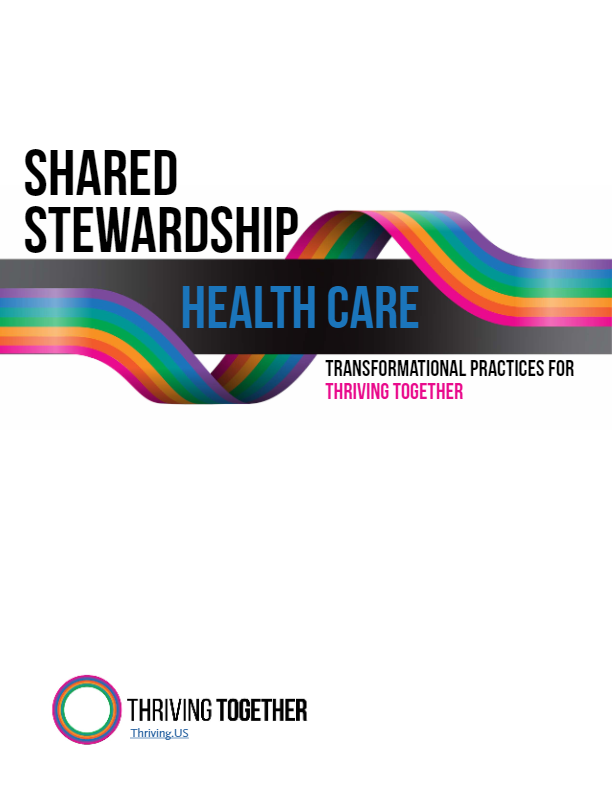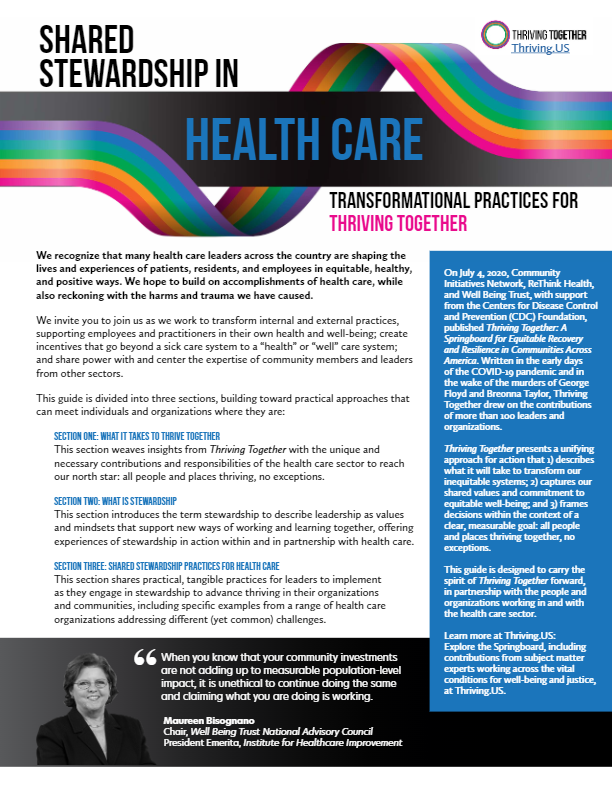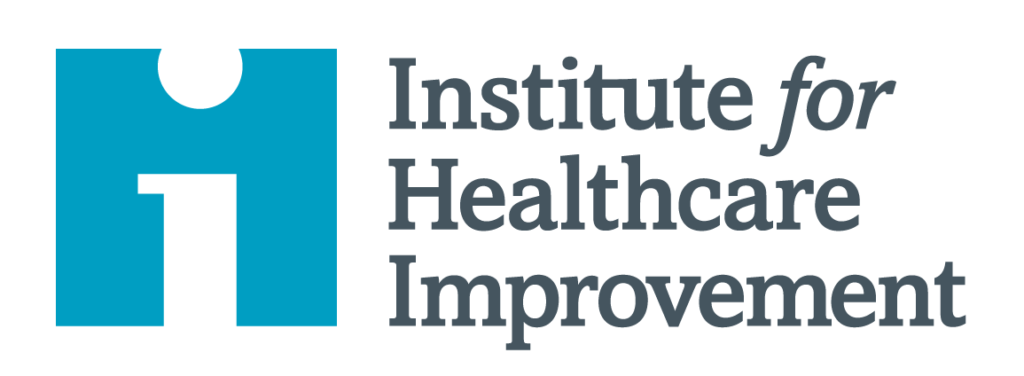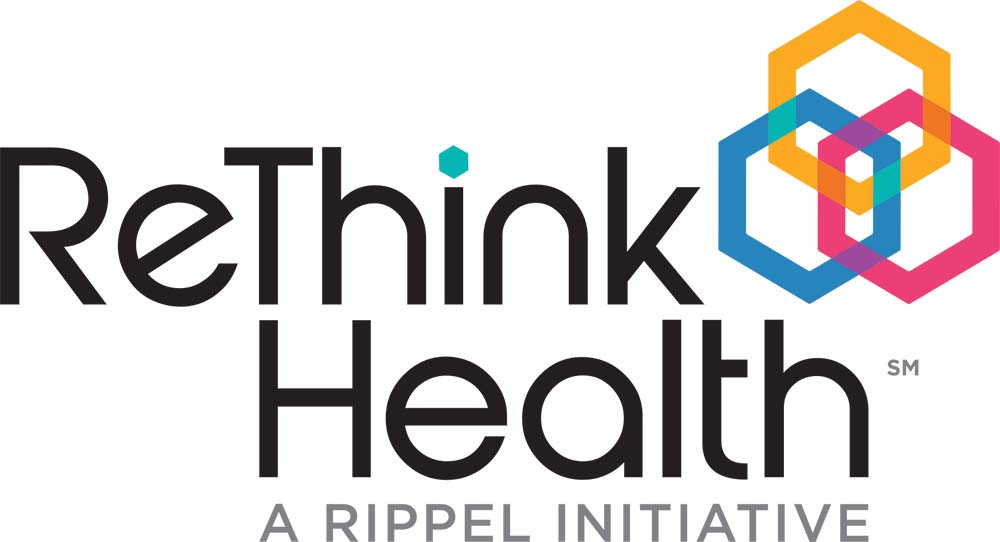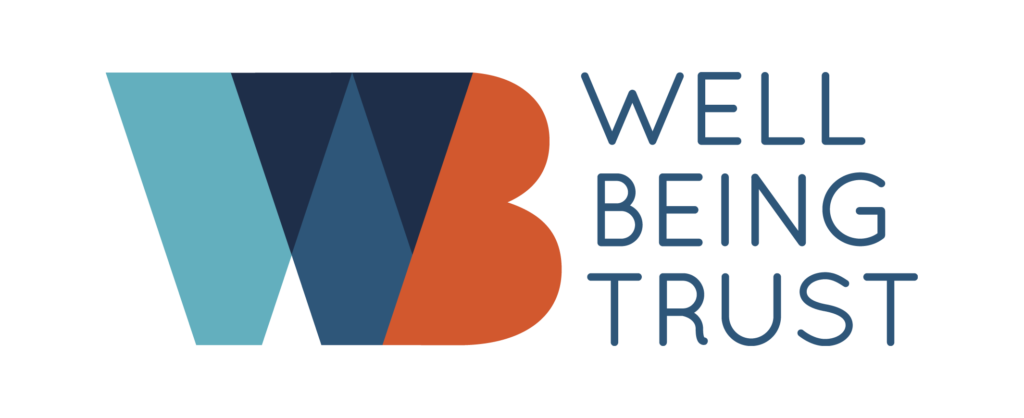We recognize that many health care leaders across the country are shaping the lives and experiences of patients, residents, and employees in equitable, healthy, and positive ways. We hope to build on accomplishments of health care, while also reckoning with the harms and trauma we have caused.
We invite you to join us as we work to transform internal and external practices, supporting employees and practitioners in their own health and well-being; create incentives that go beyond a sick care system to a “health” or “well” care system; and share power with and center the expertise of community members and leaders from other sectors.


Shared Stewardship in Health Care: Transformational Practices for Thriving Together
December 2021
Dear Colleagues:
We are thrilled to see Shared Stewardship in Health Care: Transformational Practices for Thriving Together in the hands of health and civic leaders during these unprecedented times. This guide is insightful, rooted in the evidence base, and a useful blend of innovation and pragmatism.
Read more from Maureen Bisognano and Tyler Norris
While COVID-19 and other layered crises continue to plague our communities; our health care and first responder workforce is stretched to the edge; the strength of our economic recovery remains uncertain; and political/cultural polarization is rife — the time is now to heal and renew our civic life, economic life, and social, emotional, spiritual life, starting in our communities. Measurably improving health outcomes depends on this work, and the health care sector and its community partners have a central role to play.
While we cannot change the legacies of the past, we can meet the realities of the present with an asset-based approach, rooted in human dignity, in shaping the legacy we leave to the future.
Our vision: All people and places thriving, no exceptions. Recovery cannot be a return to the status quo. We must, and can, do better.
Shared stewardship calls us to work together differently, and with shared accountability, if we are to measurably improve population health and create the conditions for equitable well-being. In the value-based world of ever-more risk arrangements, this work is also core to health care’s bottom line, and delivering on the Quadruple Aim: better health for all in our communities, better care, lower costs and a joyful workforce.
The ideas offered in this guide summarize the best thinking of scores of health care and civic leaders around the nation committed to saving lives and taking accountability for community health outcomes. We encourage you to apply this guide in taking stock of your current approach to community investment and partnership:
- Is your community work adding up to measurable, lasting impact?
- Do you have the partners you need?
- Are you leveraging your anchor assets (e.g., hiring, purchasing, and investment portfolio) alongside your community benefit grantmaking?
Let us embrace the disruption of these times, as a period of profound opportunity, with refreshed approaches and renewed vigor, together.
Maureen Bisognano, Chair, Well Being Trust National Advisory Council; President Emerita, Institute for Healthcare Improvement
Tyler Norris, MDiv., Chief Executive, Well Being Trust
Recovery cannot be a return to the status quo.
- While our health care workforce and first responders continue to meet the heavy demands of this time—all of us have a role to play in supporting their ability to thrive as they serve. Our caregivers and families are members of the communities they serve, and starting with their well-being and resilience is an essential contribution to the healing of our nation.
- Our mental health and well-being can no longer be separated from our physical health and our communities. Care needs must be driven and shaped by the people we serve to ensure the best possible patient outcomes.
- Affordable access to quality health care is vital, but this alone cannot significantly improve overall population health and well-being. A useful guide are these Seven Standards of Excellence in Community Health Investments.
- The vital conditions for intergenerational well being — the policies, systems, and environments that shape our lives—must be part of how we think about impacting health and health care. Expanding equitable access to the vital conditions is our most leveraged way to lower preventable utilization by building health in the first place, and in so doing, reducing avoidable demand for care services.
When you know that your community investments are not adding up to measurable population-level impact, it is unethical to continue doing the same and claiming what you are doing is working.
Maureen Bisognano
Chair, Well Being Trust National Advisory Council
President Emerita, Institute for Healthcare Improvement
Introduction
On July 4, 2020, Community Initiatives Network, ReThink Health, and Well Being Trust, with support from the Centers for Disease Control and Prevention (CDC) Foundation, published Thriving Together: A Springboard for Equitable Recovery and Resilience in Communities Across America. Written in the early days of the COVID-19 pandemic and in the wake of the murders of George Floyd and Breonna Taylor, Thriving Together drew on the contributions of more than 100 leaders and organizations.
Thriving Together presents a unifying approach for action that:
- Describes what it will take to transform our inequitable systems;
- Captures our shared values and commitment to equitable well-being; and
- Frames decisions within the context of a clear, measurable goal: all people and places thriving together, no exceptions.
This guide is designed to carry the spirit of Thriving Together forward, in partnership with the people and organizations working in and with the health care sector. We recognize that health care leaders across the country are shaping the lives and experiences of patients, residents, and employees in equitable, healthy, and positive ways. We hope to build on accomplishments of health care, while also reckoning with the harms and trauma we have caused.
We invite you to join us as we work to transform internal and external practices, supporting employees and practitioners in their own health and well-being; create incentives that go beyond a sick care system to a “health” or “well” care system; and share power with and center the expertise of community members and leaders from other sectors.
This guide isn’t a checklist or a recipe to follow. We need to meet this moment with adaptive strategies, knowing there are not “one size fits all” or formulaic solutions. To address the specific challenges before each of us, we propose a way of reflecting and engaging that will lead to new postures, new practices, and new ways of working and learning together.
How to Use This Guide
This guide is divided into three sections, building toward practical approaches that can meet individuals and organizations where they are:
Section One: What it Takes to Thrive Together
This section weaves insights from Thriving Together with the unique and necessary contributions and responsibilities of the health care sector to reach our north star: all people and places thriving, no exceptions.
Section Two: What is Stewardship?
This section introduces the term “stewardship” to describe leadership as values and mindsets that support new ways of working and learning together, offering experiences of stewardship in action within and in partnership with health care.
Section Three: Shared Stewardship Practices for Health Care
This section shares practical, tangible practices for leaders to implement as they engage in stewardship to advance thriving in their organizations and communities, including specific examples from a range of health care organizations addressing different (yet common) challenges.

If you are a senior leader, the practices in this guide will help you navigate the challenges you face, making it easier to do good while still doing well financially.
If you are a frontline leader, the strategies in this guide link the essential work of health care with the conditions, like education and housing, that shape our lives.
Interested in diving deeper? Explore these resources.
Section One: What It Takes to Thrive Together

For those who care about wellbeing and justice, this is a legacy moment. With 20/20 vision, we see a way forward toward wider well-being, and we are eager to join with others in the work ahead.
Springboard for Thriving Together (2020)
This Legacy Moment
We are in a moment where all members of the health care workforce, not just those
who have the formal label of “leader,” can and must lead in new ways to ensure all people can reach their full potential—and communities can thrive together.
The pandemic has laid bare longstanding inequities and gaps in how our communities, schools, health care, housing—the systems that shape our lives—are designed. While this is a legacy moment with truly unprecedented features, this moment is not wholly unique nor is it time-bound. The factors that created this moment, including access to and provision of the things that help us thrive and heal us when we are sick, are tied to the same factors that called many of us into health care in the first place: equity, justice, and service.
It is the disruption of these times, however, that can also free us to reimagine and reinvent how we work and who we are.
The Context of this Legacy Moment
To appreciate this legacy moment—the challenges as well as the potential solutions—requires zooming out from health care. Issues of health and well-being are inextricably linked with the physical, natural, and social environments in which we live, highlighting the connection between place and health:
Inequities, particularly racial inequities, are system properties of our communities and institutions. A map of any city reveals inequities in morbidity and mortality by geography. Health inequities are driven by institutional racism, implicit bias, unequal distribution of care, and other forms of oppression that play out across societal systems, affecting health and well-being outcomes.
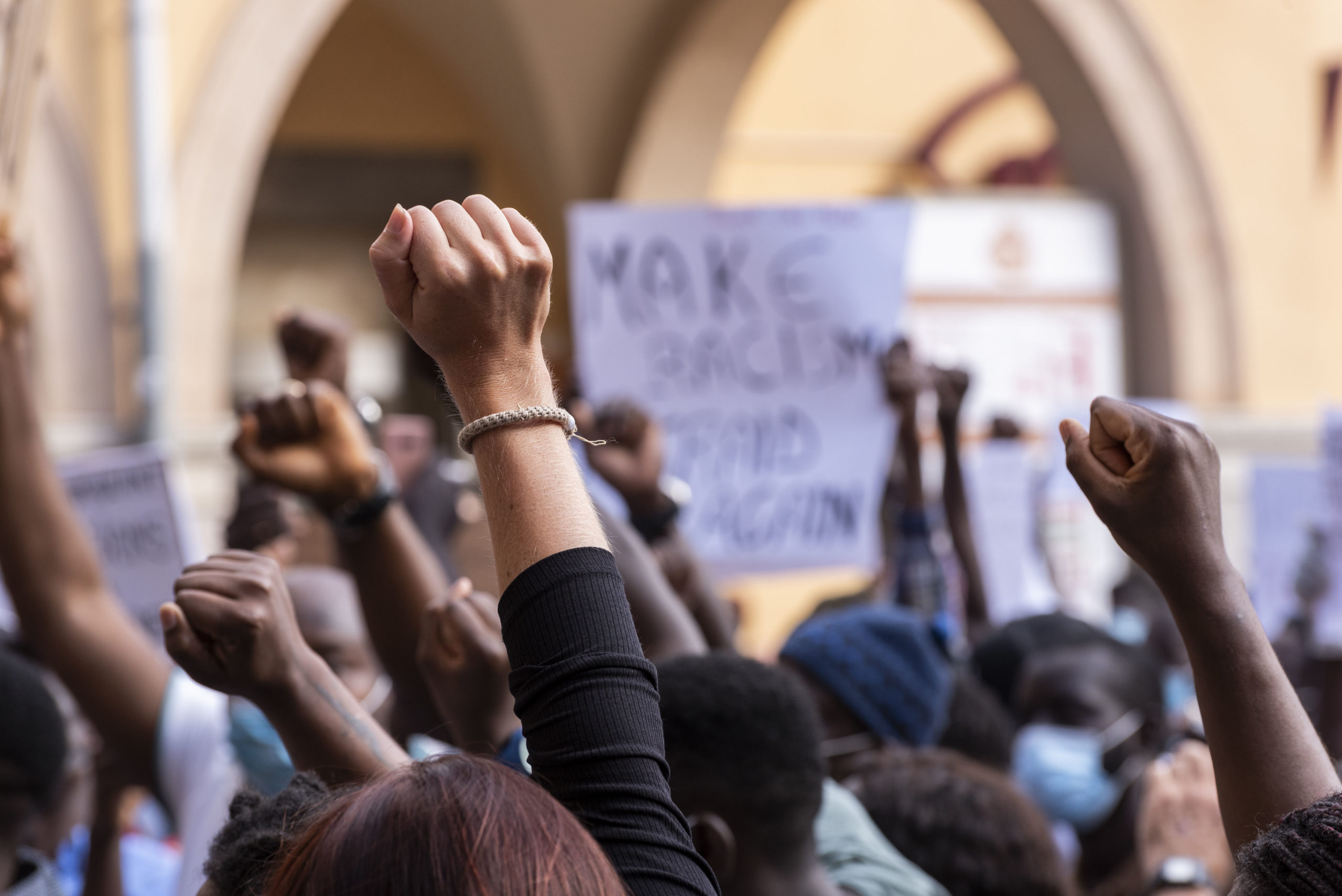
Politicization of core social issues impacts health and well-being in myriad ways. At the time of this writing, the United States is experiencing extreme polarization in the political climate at all levels—national, state, local. The question of whether or not to have mask mandates or require vaccinations have become questions not of public health safety and medical evidence, but of political loyalty.

Community systems are still functioning in silos. We have not yet figured out how sectors or systems come together in practice in the ecosystems of our communities. Yet the impacts of health care, education, and housing (to name a few of these well known social determinants of health), certainly come together in our bodies.
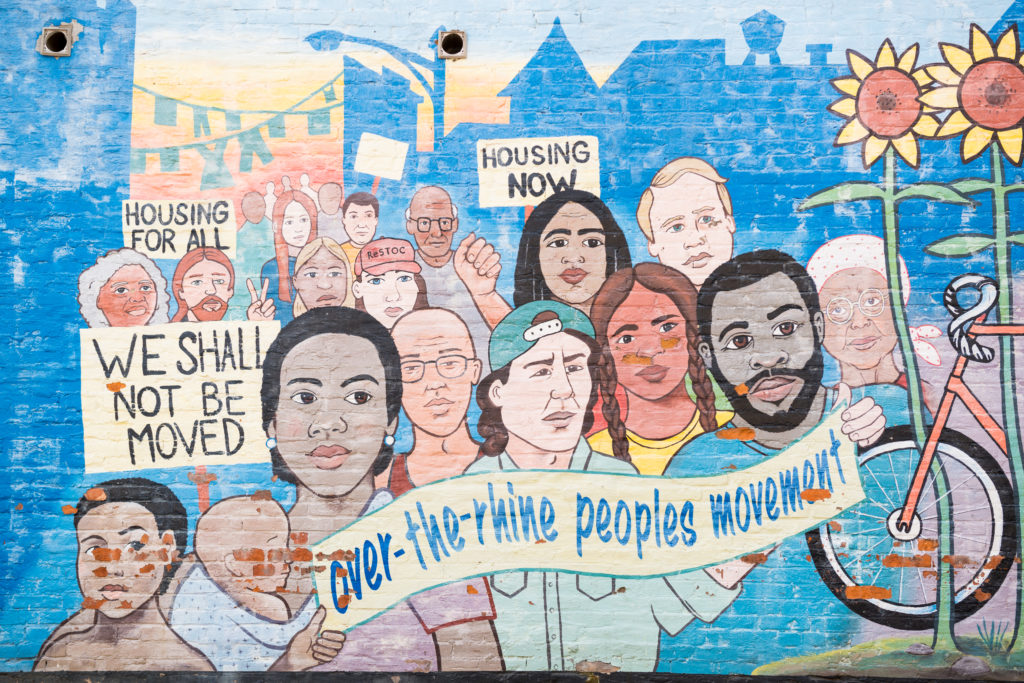
Climate change will continue to present us with a new set of complex adaptive challenges. Health care both contributes to and is affected by the climate crisis. At current emission rates, the climate crisis is projected to cause 250,000 additional deaths per year between 2030 and 2050 and could increase to 1.5 million deaths per year by 2100.

The Health Care Context
Zooming into the health care sector and its outcomes—our shared aims of improving health and well-being of populations, strengthening systems of care and caring, reducing the burden of health care costs, and caring for caregivers—we have far to go. This remains true even as providers work tirelessly to provide breakthrough results and the sector claims countless medical innovations.
Inequitable Health and Well-Being Outcomes: In the US, national health and well-being outcomes are worse than other high-income countries, and the pandemic has exacerbated inequities.

Fragmented, Unreliable Care: Our system of health care and caring has ongoing issues around safety, reliability, and right-sizing care for the right purpose.

High Health Care Costs: The burden of health care costs on individuals and the national GDP is significant, unsustainable, and does not produce positive outcomes at the population level.

Inadequate Care for Caregivers: The COVID-19 pandemic has reminded us of the importance of caring for caregivers. Health care professionals must be guaranteed occupational health and safety, paid sick leave, freedom from violence at work, and mental health support.

A Path Toward Thriving Together
We must think and act differently to respond to community needs and institutional challenges—to celebrate the interdependence that shapes our lives as caregivers, patients, and community members.
The Thriving Together approach offers a path for decisive action by organizing the things all people and places need to thrive around a measurable north star of thriving; by proposing practices and mindsets of stewardship to describe new ways of working and learning together; by centering equity and justice—and creating legacies we are proud to pass along to future generations.
Imagine Fox Cities has its roots in that kind of thinking: where do we want to be in 25 years from now? If that is where we need to be, then what has to be true? What has to be true, has to be bigger than us.
Dr. Imran Andrabi, ThedaCare
How people experience well-being is inextricably linked to the community’s vital conditions—properties of places and institutions that all people need all the time to be healthy and well. Our health and well-being do not depend only on our access to basic needs, which includes high-quality health care. In order to thrive, we must have access to a consistent, complete set of vital conditions, such as clean air, fair pay, humane housing, and early education, and other necessities. These vital conditions, or social determinants of health, form an interdependent system that shapes the choices, opportunities, and challenges we encounter throughout our lives.
While vital conditions are necessary to achieve health and well-being, there are moments in our lives when we experience a crisis. Urgent services, like food or unemployment assistance, are necessary for relieving short-term suffering—and our health care systems are essential providers of acute and urgent care.
Urgent services are a necessary part of how we take care of each other, but these temporary efforts to help people in crisis are not enough and do not address persistent and entrenched inequity. By shifting our focus from a “sick care” system to intentional investments in the conditions that prevent illness and injury, promote prevention and well-being, and reduce utilization of urgent services, we can decrease health care costs and increase patient health and well-being.
The Vital Conditions & Health Care
Health care has a powerful role to play when it comes to expanding all of the vital conditions. While health care often centers its work on urgent services and basic needs, the sector is a key partner for strengthening our communities.
Vital conditions are each distinct and indispensable—and form an interdependent system. Investments in one vital condition will strengthen the entire system, community, or region.
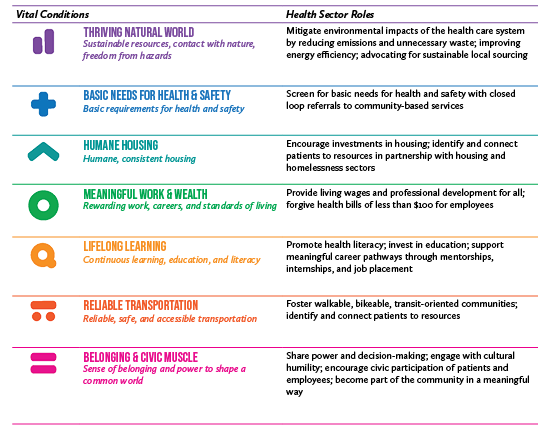
Unsung Stewards
In ReThink Health’s new podcast series Unsung Stewards, guests share how they are navigating the turbulent times we are experiencing as a nation. You’ll hear stories of thriving against all odds, embracing moments of joy, showing resilience during the most difficult times, and coming together as a community–all grounded in how stewards are showing up to support transformational change.
You need to find that person in your organization who is a change agent, who is a bridge to the community, who is already doing that work.
Lena Hatchett, Loyola University & Proviso Partners for Health
Interested in diving deeper? Explore these resources.
Section Two: What is Stewardship?
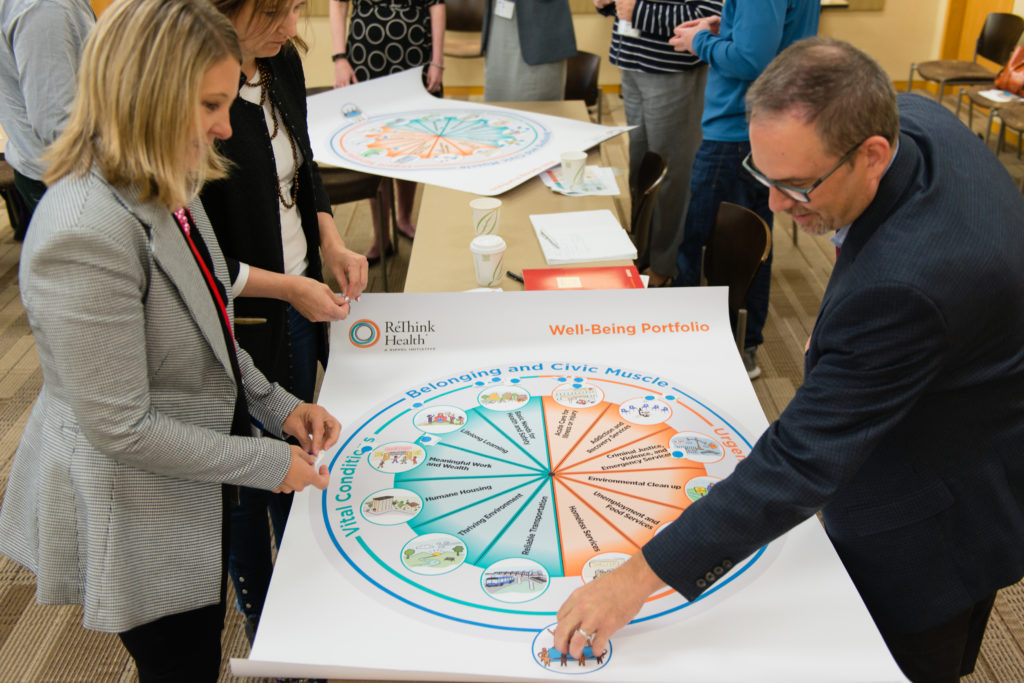
Stewards of well-being and justice are people and organizations who share responsibility for working across differences to expand the vital conditions all people and places need to thrive.
Springboard for Thriving Together (2020)
Defining Stewardship
Leaders and community members across the country are creating change: not incremental steps but true transformation. This approach to leadership requires new postures, new practices, and new ways of learning and working together. Our leadership must extend beyond our job descriptions, beyond our institutions and formal roles.
Stewardship demands that we turn toward our interconnectedness, toward creating a life that honors our shared humanity. When we are practicing stewardship, we are invited out of “right or wrong,” and into an orientation that mobilizes the kind of discovery, experimentation, and learning that help us uncover the solutions we need.
Leaders engage in stewardship so that purpose that is larger than oneself and one’s organization, power is built and shared with others, and wealth is invested to create long-term value as well as address short-term urgent needs in order to transform wellbeing across a region.
Stewardship means
- Connecting Across Differences: Stewardship is not a solo act. It becomes increasingly powerful as more people and organizations are drawn into the work together, connecting across geographies, roles, departments, sectors, or cultural divides because they are informed by place-based, interdisciplinary, multisector, multiracial, and multicultural perspectives.
- Creating Opportunities: Progress depends on actively breaking from the status quo by continually creating opportunities for a different future to take hold.
- Learning and Adapting: Our world is constantly changing; adaptive approaches will help us to move forward together, especially in the face of uncertainty.
Stewardship & Health Care
We cannot make progress fast enough to meet this legacy moment if we limit ourselves to known technical solutions and traditional management or clinical leadership methods. Instead, health care has unique opportunities and responsibilities that align with stewardship, positioning health care leaders and institutions to be key field builders in this complex, adaptive environment in which we find ourselves.
Opportunities for Health Care
- Community Investment: Many leaders and institutions are part of a growing movement committed to unlocking their community’s potential to thrive through collaborative investments in community health and well-being.
- Anchor Institution Strategies: Health care institutions serve as key organizations in their communities, rooted in place, with many roles—purchaser, employer, developer—beyond provision of health care services.
- Mission-Driven Organizations: Many health care institutions have always leaned on an enduring legacy of being in solidarity with and caring for those most in need of healing.
- Community Advocate: As leaders with the moral authority and responsibility to advocate for those suffering and struggling the most, many health care institutions advance policy change for the health and well-being of the community.
In order to realize this vision of healing in a rapidly changing world, our approach must be deeply rooted in relationships with our community where we can build the trust that is necessary to accomplish together what we cannot accomplish alone.
Dougal Hewitt, EVP/Chief Mission & Sponsorship Officer Providence
Stewardship in Action
These examples offer ways communities and institutions have taken an abstract idea like stewardship and made it their own; more specific examples follow in the next section:
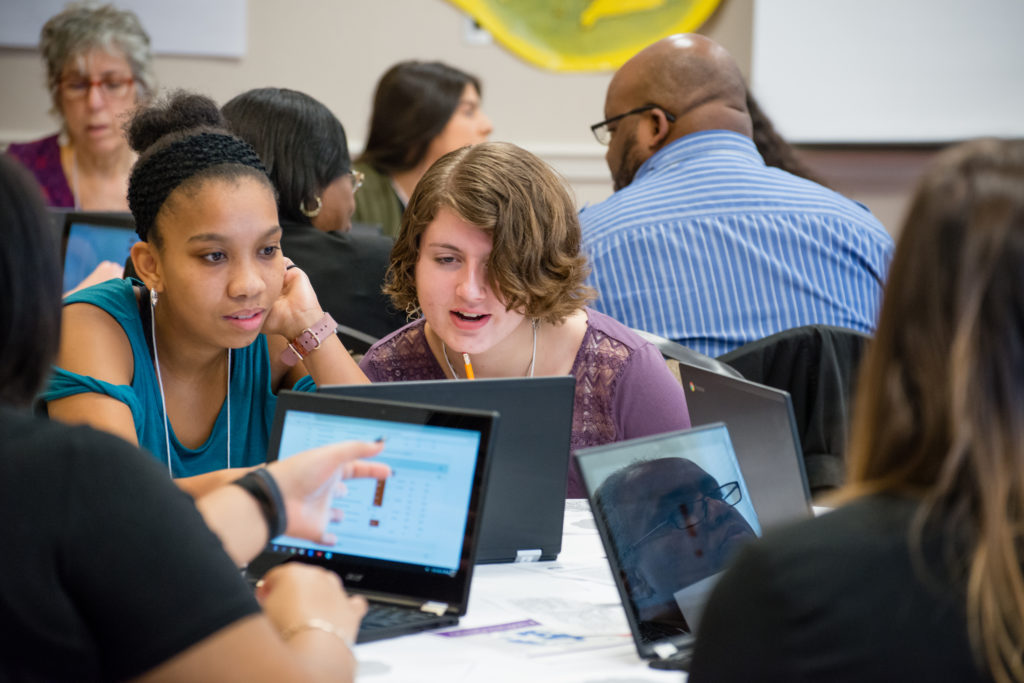
Connecting Across Differences: To improve youth mental health, a local foundation invests in high school students as “context experts” who work together with officials from youth service agencies and the county health department.
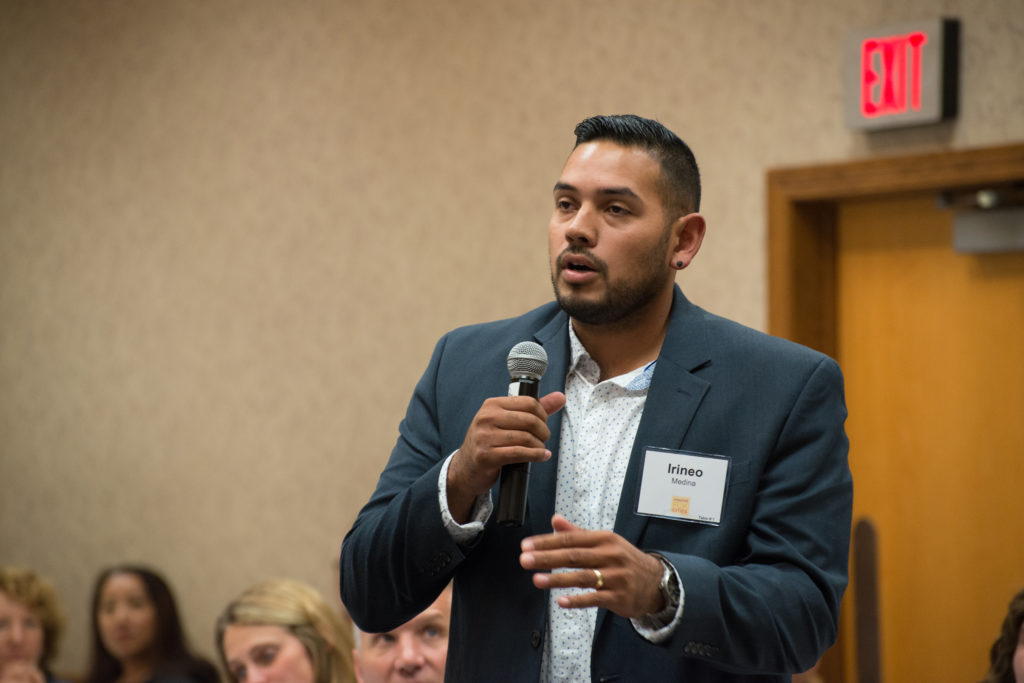
Creating Opportunities: A hospital system’s philanthropic department builds an endowed community investment fund through the intentional allocation of a portion of every dollar raised in its capital campaign; community residents help decide how those funds are allocated.
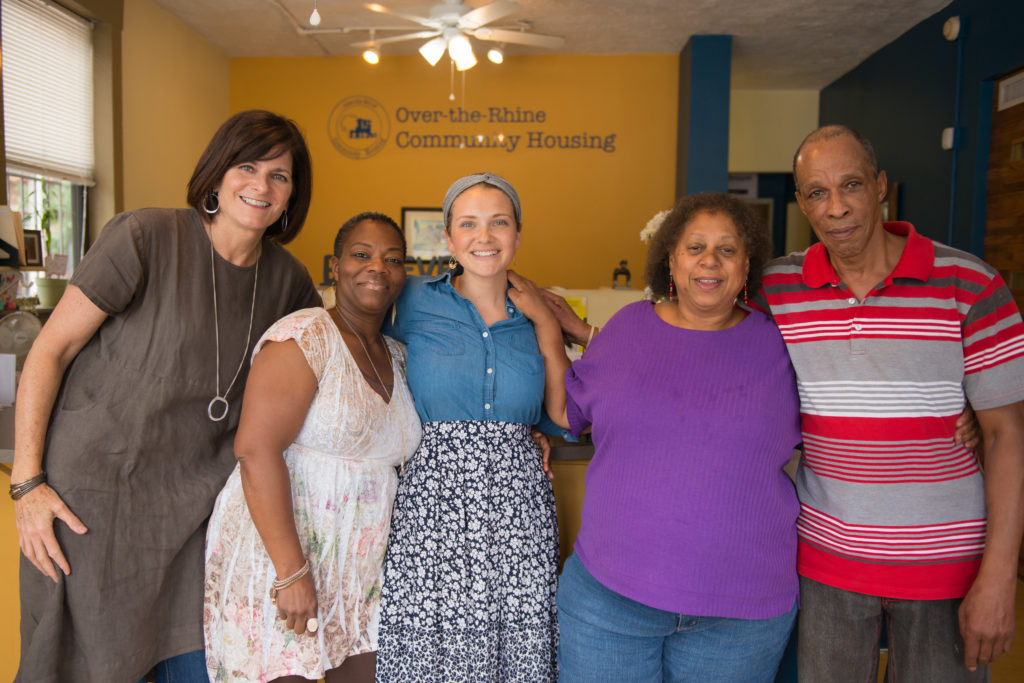
Learning and Adapting: After listening to nonprofit leaders, a hospital system decides to forego its own strategy to address housing needs, and connects into the local community’s “coordinated entry” system for housing run by the local homeless response system stakeholders.
Voices from the Field
Stewardship is also a personal journey, rooted in reflection and self-awareness. These voices embody the values and mindsets that form the stewardship practices we will introduce in Section Three.
Interested in diving deeper? Explore these resources.
Section Three: Shared Stewardship Practices in Health Care
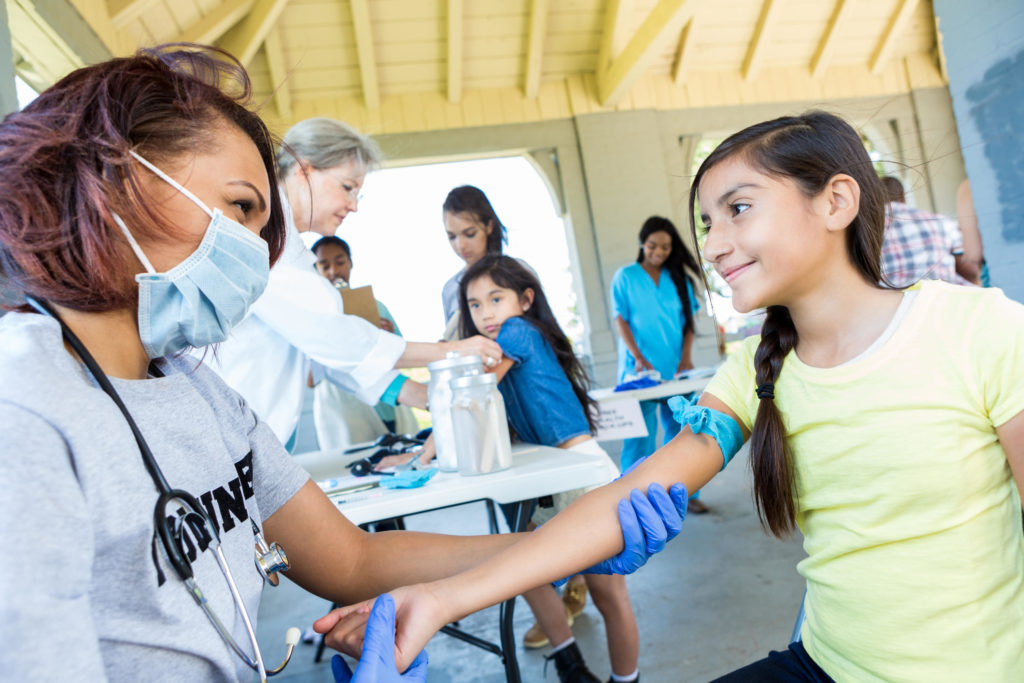
Leaders in the health care sector face extraordinary challenges, balancing expectations and accountability to community members, patients, employees, boards, peers, and more. There are no step-by-step formulas or easy solutions to work this complex and important.
Instead, we offer stewardship as a way of reflecting and engaging that shifts how we work and learn together. This section introduces emerging stewardship practices, or ways of approaching leadership, specifically for the health care sector.
Stewardship Starts with Powerful Questions
The practice of stewardship provides an approach rather than a recipe or explicit directions. One point of entry, no matter where we are—in geography, in leadership, in circumstance, in our organization’s journey—is to ask a powerful question.
Powerful questions bring us into a stewardship mindset and heart-set, encouraging us to hit pause, reset our conditioned reactions, and reorient ourselves.
Our powerful questions for practicing stewardship in the health care sector are designed to support reflection and exploration in teams, across institutions, and with community members. These questions help us, as health care leaders, think about what a breakthrough would mean in our work; our intentions and deeper purpose; and whose lives will get better because we are here.
How do you capture community voice? I don’t have to create a group or a meeting to hear from Tribes, communities of color, people who are homeless, who are incarcerated. I just need to find out where I should go to meet people where they are.
Liz Baxter, North Sound Accountable Community of Health
Connect Across Differences: Building Trusting Relationships
Stewardship is not a solo act. It becomes increasingly powerful as more people and organizations are drawn into the work together, connecting across geographies, roles, departments, sectors, or cultural divides because they are informed by place-based, interdisciplinary, multisector, multiracial, and multicultural perspectives.
What does it mean to connect across differences?
- Weave Mutual Interests: Seek ways to understand the values and priorities of others. See opportunity in tension. Use dialogue to stay curious, build trust and discover common aspirations and interests.
- Engage Unheard Voices: Learn from underheard perspectives and marginalized group —and build belonging in the process. See community engagement as a cocreation process, not an obligatory input.
- Share Power: Discover the unique contribution each individual and organization can make. Grow stewardship as the de-facto way of working together. Create just enough structure for ongoing and emergent forms of collaboration.
stewardship questions
- What’s an example of a collaboration that has worked well because it involved stakeholders who held really different perspectives? What made it work?
- How can we fully engage community members, particularly underheard voices and marginalized groups, in the process of co-creating solutions? What are the potential win-wins? How do we build and nurture trust?
- What’s a current community challenge/opportunity that is calling for shared stewardship—working across a wide range of different perspectives—for the well-being of our community? What’s holding us back? Where might we start?
Create Opportunities: Transforming Systems for All to Thrive
Progress depends on actively breaking from the status quo by continually creating opportunities for a different future to take hold. This can only happen if we transform systems that were never designed for all community members to thrive.
What does it mean to create opportunities?
- Expand Aspirations: Change expectations about what is possible. Recover and reimagine our larger purpose. See the “whole system,” not just isolated pieces. Be bold: ensure collaborative work is worthy of partners’ collective energy.
- Harness the Power of Story: Start with story, it’s how we share and make meaning. Explore stories of positive and negative legacies with candor (what to leave behind and what to bring with us). Cultivate stories of hope and mutual strength, stories about the legacies we will create together.
- Commit to Multisolving: Choose solutions that advance multiple goals at once, are mutually reinforcing, and deliver co-benefits. Upstream solutions are always multisolvers. Discard zero-sum thinking.
- Align Investments: Develop collective investment strategies for shared community goals. Establish a balanced investment portfolio: meet the urgent needs of those who are suffering and expand the vital conditions essential for everyone’s well-being.
Stewardship Questions
- What is a past harm (i.e., legacy decision, action, or practice inherited from our ancestors) that hinders members of our community from thriving? How might we bravely and safely hold space for healing? What is a legacy that has enhanced community thriving?
- What is a common narrative about our community and/ or our system that has a profound impact on how we think and behave? What’s a narrative you would like to hear in the future?
- What vital condition (in addition to Basic Need for health care) do you see as our most significant contribution to our community’s well-being? What are other opportunities to “multi-solve” and align investments with other partners?
Learn and Adapt: Navigating the Future Together
Our world is constantly changing; adaptive approaches will help us to move forward together, even in the face of uncertainty. We need to be able to adapt to and navigate this future together.
What does it mean to Learn and Adapt?
- Embrace Complexity: Appreciate that the work of social change is messy, unpredictable, and always evolving. Cultivate comfort with the unknown—let it drive curiosity and creativity.
- See Everything as a Learning Opportunity: Create a culture of continuous shared learning. Gain inspiration from positive outliers. Adapt to new information and perspectives through regular feedback loops. Be experimental, implement smallscale prototypes.
- Make Wise Use of Data: Agree on shared measures of north star goals (i.e., % of people thriving + access to vital conditions for well-being)—and track progress. Create space for shared sense-making; engage diverse community perspectives to tell the stories behind the data. Use data for case making, to catalyze change.
Stewardship Questions
- What’s an example of a time when our community or system adapted (bounced back) from a significant setback or adverse circumstance? What was key?
- What are the signs and attributes of a community or system that has a strong culture of learning? Is there a recent example?
- What is one strategy or action we could take to substantially improve how we learn, act and adapt together? What would it take to move this forward?
Health Care Stewardship Starts with Powerful Questions
Explore stewardship practices through powerful questions with your team, organization, or community.
Interested in diving deeper? Explore these stories.
- Better Maternal Outcomes: Redesigning Systems with Black Women: One of four community collaboration sites, more than 15 partners in Detroit, Michigan established design teams to focus on three key areas: pregnancy, birth, and postpartum. The partners collaborated to improve maternal health outcomes for Black people who birth by advocating for health care providers to build relationships with doulas; providing unconscious bias training to providers; and increasing awareness of postpartum warning signs and resources among postpartum people who birth and their families.
- University of Arkansas for Medical Sciences: The University of Arkansas for Medical Sciences (UAMS) increased employee compensation from the minimum wage to a local living wage. UAMS’ chancellor, chief human resources officer, and chief financial officer created institutional will, built a sustainable financial model, and secured approval from the Arkansas Department of Higher Education to ensure the institution’s more than 1,500 full-time low-wage workers are able to move out of poverty.
- Parkland Health & Hospital System: Parkland Health & Dallas County Health and Human Services and PCCI, an advanced analytics data shop affiliated with the health system, partnered to use hyper-local data and deep community engagement to support COVID-19 vaccine deployment. Through a comprehensive communications strategy, more than 51 percent of the vaccines Parkland administered were given to the community members at highest risk, who are ranked 4 or 5 on the SocioNeeds Index scale by ZIP code.
Stay Connected
We are continuing to learn and evolve this page–and want our resources to be useful and pragmatic. Tell us what you are learning and what you need. What would help you on your path to shared stewardship?
